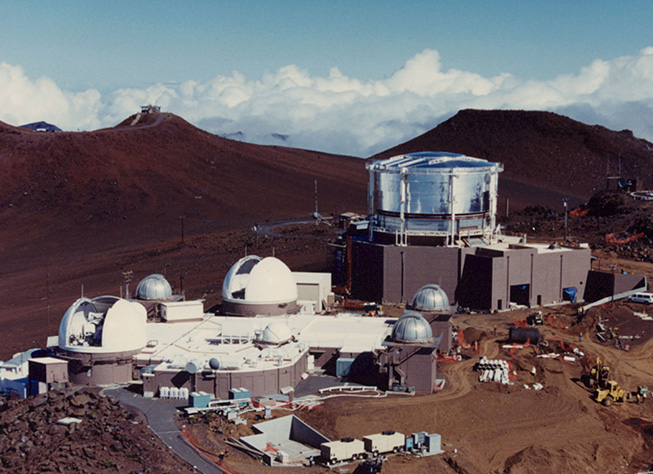The Agency initiated the ARPA Midcourse Optical Station (AMOS) program in 1961 with the goal of developing an astronomical-quality observatory to obtain precise measurements and images of satellites, payloads, and other space objects re-entering the atmosphere from space.
ARPA located the facility atop Mount Haleakala, Maui, Hawaii, nearly 10,000 feet above sea level.
By 1969, the quality and potential of AMOS had been demonstrated, and a second phase began to measure properties of re-entry bodies at the facility under the Advanced Ballistic Reentry System Project. In the late 1970s, successful space object measurements continued in the infrared and visible ranges, and laser illumination and ranging were initiated.
Other developments such as the compensated imaging program were tested successfully at AMOS. By 1984, the AMOS twin infrared telescopes had become a highly automated system and DARPA transferred it to the U.S. Air Force as one of the primary sensors of the Air Force Space Tracking System.
In 1993, the Air Force renamed AMOS as the Air Force Maui Optical and Supercomputing Site.
